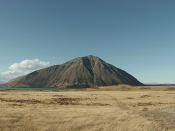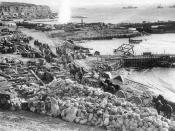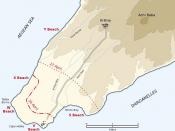After Germany delivered a crushing blow to Russia at the battle of Tannenberg, the Russians were threatened by a Turkish advance through the Caucasus and appealed to their allies for assistance. Gaining control of the Dardanelle Strait would re-establish communications with Russia and open up wheat and shipping locked in the black sea by turkey. The allies planned to storm up the Dardanelle Strait and shell Constantinople (now Istanbul) then proceed to the Ukrainian port of Odessa. Before they did this they cautiously tested the range of the Turkish shore batteries, the Turkish realised immediately how vulnerable they were to future attacks and strengthened their defences with carefully laid minefields, well sited guns and search lights that swept the narrows at night.
Three months later a fleet of British and French vessels that included eighteen battleships attempted to force its way up the Dardanelle Strait through to Constantinople. After losing three capital ships and having a further three crippled they decided to turn back.
It was unknown to The Allies at the time but the Turkish batteries had almost exhausted all their ammunition and the fleet could have sailed on to Constantinople and taken little further damage. It was decided that it was impossible to sail up the Dardanelles without first landing troops on the Gallipoli peninsula to force silence to the Turkish guns.
The British 29th division was to carry out the landing at Cape Helles, which was located on the tip of the Gallipoli peninsula, they were to march up the peninsula and take the fort of Kalitbahir, which controlled the guns overlooking the waters of the Dardanelles Strait. Because the area of beach at Cape Helles was limited, it was decided that the Anzacs were to be landed further north on the Aegean coast. If the Turkish...



Job well done!
Your essay on the history of the events before the actual battle was thorough and summerized.
0 out of 1 people found this comment useful.